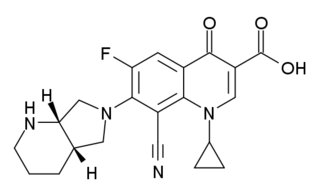
The quadriceps femoris muscle is a large muscle group that includes the four prevailing muscles on the front of the thigh. It is the great extensor muscle of the knee, forming a large fleshy mass which covers the front and sides of the femur. The name derives from Latin four-headed muscle of the femur.
The genus Phenacomys is a group of North American voles. The genus name comes from the Greek for "imposter mouse."

The western heather vole is a small vole found in western North America. Until recently, the eastern heather vole,, was considered to be a subspecies.

The vastus intermedius (Cruraeus) arises from the front and lateral surfaces of the body of the femur in its upper two-thirds, sitting under the rectus femoris muscle and from the lower part of the lateral intermuscular septum. Its fibers end in a superficial aponeurosis, which forms the deep part of the quadriceps femoris tendon.
The articularis genus is a small skeletal muscle located anteriorly on the thigh just above the knee.

The intermediate nerve, nervus intermedius, nerve of Wrisberg or Glossopalatine nerve, is the part of the facial nerve located between the motor component of the facial nerve and the vestibulocochlear nerve. It contains the sensory and parasympathetic fibers of the facial nerve. Upon reaching the facial canal, it joins with the motor root of the facial nerve at the geniculate ganglion. Alex Alfieri postulates, that the intermediate nerve should be considered as a separate cranial nerve and not a part of the facial nerve.

Amblyseius is a large genus of predatory mites belonging to the family Phytoseiidae. Many members of this genus feed on other mites such as red spider mites, and also on thrips. Several species are popular as biological control agents to control these pests.

The northern yellow bat is a non-migratory bat in the family Vespertilionidae, typically active year-round except during abnormally frigid winter weather, during which they will induce torpor.

Labeobarbus intermedius is an East African ray-finned fish species in the family Cyprinidae. Like the closely related yellowfish, it is hexaploid. A large species, the maximum recorded standard length is nearly 50 cm (20 in). This species has a subspecies named Labeobarbus intermedius intermedius.

The lesser masked weaver is a species of bird in the family Ploceidae. It builds its nests in large colonies, often alongside the village weaver and sometimes the red-billed buffalo weaver. This species is commonly parasitised by the Diederik cuckoo. It is found in eastern, south-eastern and southern Africa.

Hayman's dwarf epauletted fruit bat or Hayman's epauletted fruit bat is a species of megabat in the family Pteropodidae. It is found in Angola and Democratic Republic of the Congo. Its natural habitats are subtropical or tropical moist lowland forest and moist savanna. It is threatened by habitat loss.

Pradofloxacin is a 3rd generation enhanced spectrum veterinary antibiotic of the fluoroquinolone class. It was developed by Bayer HealthCare AG, Animal Health GmbH, and received approval from the European Commission in April 2011 for prescription-only use in veterinary medicine for the treatment of bacterial infections in dogs and cats.

Andersen's flying fox is a species of flying fox in the family Pteropodidae found in south Burma and west Thailand. Although it is hunted for both food and as a pest, it is not known if this has a significant impact on the species. It has been seen roosting in tall, well-established trees in urban areas and will fly several kilometres to eat wild and cultivated fruits. The species was named after Knud Christian Andersen. It was last recorded in Thailand in 1970 and, presumably, there is still a small viable population in Myanmar.

Gloydius intermedius is a venomous pitviper species endemic to northern Asia. Three subspecies are currently recognized, including the nominate subspecies described here.

Adenanthos barbiger, the hairy jugflower or hairy glandflower, is a species of shrub in the family Proteaceae. It is endemic to the south-west of Western Australia. It usually grows to 1 metre high, and has bright red flowers that appear mostly between August and December. The species was first formally described in 1839 by English botanist John Lindley in A sketch of the vegetation of the Swan River colony.
Amblyseius andersoni is a species of mite in the family Phytoseiidae. It is found in Europe.
Typhlodromips swirskii, the Swirski mite, is a species of predatory mite in the family Phytoseiidae. It is used in biological pest control of western flower thrips in greenhouse or indoor grown crops.












